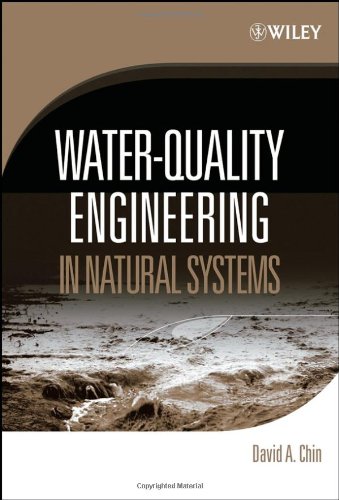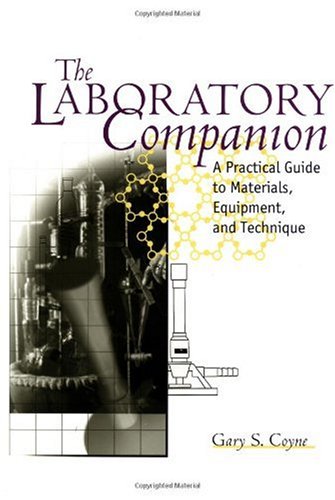David A. Chin0-471-71830-0, 978-0-471-71830-7
Table of contents :
WATER-QUALITY ENGINEERING in Natural Systems……Page 3
CONTENTS……Page 9
PREFACE……Page 15
1 INTRODUCTION……Page 19
1.1 Principles of Water-Quality Control……Page 21
1.2 Sources of Water Pollution……Page 23
1.2.1 Point Sources……Page 24
1.2.2 Nonpoint Sources……Page 27
1.3 Laws and Regulations……Page 30
1.3.1 Clean Water Act……Page 31
1.3.2 Safe Drinking Water Act……Page 32
1.4 Strategy for Water-Quality Management……Page 36
1.4.2 Total Maximum Daily Load Process……Page 37
Summary……Page 38
Problems……Page 39
2.1 Introduction……Page 40
2.2.1 Physical Measures……Page 41
2.2.2 Chemical Measures……Page 46
2.2.3 Biological Measures……Page 67
2.3 U.S. Surface-Water Standards……Page 81
2.3.1 Designated Beneficial Uses……Page 82
2.3.2 Water-Quality Criteria……Page 83
2.3.4 General Water-Quality Management Practices……Page 98
2.4 U.S. Ground-Water Standards……Page 104
2.5 Background Water Quality……Page 105
Summary……Page 107
Problems……Page 108
3.1 Mixing of Dissolved Constituents……Page 109
3.2 Properties of the Diffusion Equation……Page 113
3.2.1 Fundamental Solution in One Dimension……Page 114
3.2.2 Principle of Superposition……Page 119
3.2.3 Solutions in Higher Dimensions……Page 126
3.2.4 Moment Property of the Diffusion Equation……Page 132
3.2.5 Nondimensional Form……Page 134
3.3 Transport of Suspended Particles……Page 136
Problems……Page 139
4.1 Introduction……Page 142
4.2.1 Initial Mixing……Page 144
4.2.2 Longitudinal Dispersion……Page 153
4.3.1 Governing Equation……Page 157
4.3.2 Fate of Volatile Organic Compounds in Streams……Page 163
4.4 Continuous Discharges……Page 167
4.4.1 Oxygen Demand of Wastewater……Page 168
4.4.2 Reaeration……Page 169
4.4.3 Streeter–Phelps Model……Page 172
4.4.4 Other Considerations……Page 175
4.5.1 Nonstructural Techniques……Page 193
4.5.2 Structural Techniques……Page 196
4.6 Computer Codes……Page 201
Summary……Page 203
Problems……Page 204
5.1 Introduction……Page 210
5.2.1 Flow and Dispersion……Page 214
5.2.2 Light Penetration……Page 215
5.2.4 Eutrophication and Nutrient Recycling……Page 216
5.2.5 Thermal Stratification……Page 225
5.3.1 Zero-Dimensional (Completely Mixed) Model……Page 230
5.3.2 One-Dimensional (Vertical) Models……Page 235
5.3.3 Two-Dimensional Models……Page 236
5.4.1 Control of Eutrophication……Page 239
5.4.2 Control of Dissolved-Oxygen Levels……Page 244
5.4.4 Control of Acidity……Page 250
5.4.5 Control of Aquatic Plants……Page 252
5.5 Computer Codes……Page 256
Summary……Page 257
Problems……Page 258
6.1 Introduction……Page 261
6.2.1 Marshes……Page 263
6.2.2 Swamps……Page 264
6.2.4 Fens……Page 266
6.3 Delineation of Wetlands……Page 267
6.3.1 Vegetation……Page 268
6.3.3 Hydrology……Page 269
6.4 Wetland Hydrology……Page 271
6.4.2 Net Ground-Water Inflow……Page 272
6.5 Case Study: The Everglades and Big Cypress Swamp……Page 273
6.6 Constructed Treatment Wetlands……Page 274
6.6.1 Surface-Flow Wetlands……Page 275
6.6.2 Subsurface-Flow Wetlands……Page 277
6.6.3 Wetland Regulations in the United States……Page 278
6.6.5 Design of Constructed Treatment Wetlands……Page 280
6.6.6 Wetlands for Treating Roadway Runoff……Page 296
Summary……Page 297
Problems……Page 298
7.2 Natural Ground-Water Quality……Page 299
7.3 Contaminant Sources……Page 301
7.3.1 Septic Tanks……Page 302
7.3.3 Land Application of Wastewater……Page 303
7.3.4 Irrigation and Irrigation Return Flow……Page 305
7.3.5 Solid-Waste Disposal Sites……Page 308
7.4 Fate and Transport Models……Page 310
7.4.1 Instantaneous Point Source……Page 313
7.4.2 Continuous Point Source……Page 315
7.4.3 Continuous Plane Source……Page 317
7.5 Transport Processes……Page 320
7.6 Fate Processes……Page 329
7.6.1 Sorption……Page 330
7.6.2 First-Order Decay……Page 338
7.6.3 Combined Processes……Page 340
7.7 Nonaqueous-Phase Liquids……Page 343
7.8 Remediation of Subsurface Contamination……Page 347
7.8.1 Remediation Goals……Page 348
7.8.2 Site Investigation……Page 349
7.8.3 Remediation Strategies……Page 363
7.9 Computer Models……Page 398
Summary……Page 400
Problems……Page 401
8.1 Introduction……Page 408
8.2 Ocean-Outfall Discharges……Page 409
8.2.1 Near-Field Mixing……Page 412
8.2.2 Far-Field Mixing……Page 430
8.3 Water-Quality Control in Estuaries……Page 438
8.3.1 Classification of Estuaries……Page 440
8.3.2 Physical Conditions……Page 442
8.3.3 Chemical Conditions……Page 449
8.3.4 Biological Conditions……Page 450
8.4 Computer Models……Page 451
Problems……Page 453
9.1 Introduction……Page 457
9.2 Source-Water Protection……Page 459
9.3 Watershed-Generated Pollutant Loads……Page 461
9.4 Urban Watersheds……Page 466
9.4.1 Sources of Pollution……Page 467
9.4.2 Fate and Transport Processes……Page 472
9.4.3 Best Management Practices……Page 480
9.5 Agricultural Watersheds……Page 500
9.5.1 Sources of Pollution……Page 501
9.5.2 Fate and Transport Processes……Page 505
9.5.3 Best Management Practices……Page 531
9.6 Airsheds……Page 540
9.6.2 Mercury……Page 542
9.6.5 Combustion Emissions……Page 544
9.7 Computer Models……Page 545
Summary……Page 548
Problems……Page 549
A.1 Units……Page 551
A.2 Conversion Factors……Page 552
B.1 Water……Page 555
B.3 Air at Standard Atmospheric Pressure……Page 558
C.1 Water-Quality Criteria for Surface Waters……Page 559
C.2 Water-Quality Criteria for Drinking Water……Page 565
C.3 Priority Pollutants……Page 569
D.1 Areas Under the Standard Normal Curve……Page 571
E.1 Error Function……Page 575
E.2.1 Definition……Page 576
E.2.2 Evaluation of Bessel Functions……Page 577
E.3 Gamma Function……Page 581
F.2 Ductile Iron Pipe……Page 583
F.3 Concrete Pipe……Page 585
REFERENCES……Page 587
INDEX……Page 619







Reviews
There are no reviews yet.